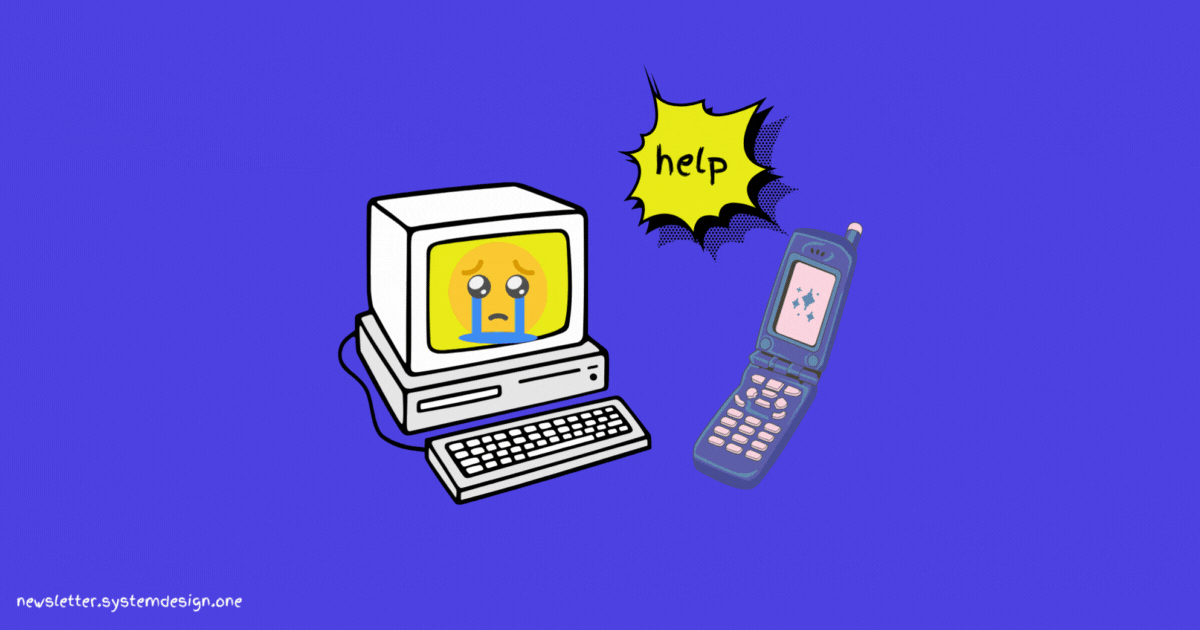How Giphy Delivers 10 Billion GIFs a Day to 1 Billion Users
#14: And CDN Explained Like You’re Five (3 minutes)
Get my system design playbook for FREE on newsletter signup:
Once upon a time, there lived a tiny server.
She had a single purpose in life: to give people dancing cat GIFs and make the internet a fun place.
People who asked for the dancing cat GIFs lived closer to her.
So she was able to give it to them fast.
And she was living a Happy life.
But one day.
An Evil GIF maker, Bob entered the picture.
And ruined it all.
He puts a famous cat GIF on the tiny server.
So people from many countries started asking her for it.
But most of them lived far away.
So it took her lots of time to give it to them.
And she was Sad.
So she dials Giphy engineers for help.
“What’s the big deal?”, said Giphy engineers, “Let’s get you some friends for help”.
And called her new friends Edge servers.
Their only job was to keep a GIF copy and give it to people nearby.
Also they had a superpower: they were fast because they stored GIFs in memory.
Edge servers lived in different countries closer to people.
So people who lived far away got the GIF fast from them.
And life was Good again.
Until one day when Bob returned.
He showed no Mercy.
And puts a new viral cat GIF on the tiny server.
Phone calls for the tiny server skyrocketed.
Because no edge servers had a copy of the viral GIF.
Yet people all over the world asked them for it.
But the tiny server could attend only a few phone calls simultaneously.
So she was under pressure. And Heartbroken.
She picks up the phone and calls Giphy engineers for help.
This time Giphy engineers thought hard. And came up with a simple idea.
“Did you make any best friends?”, asked Giphy engineers.
“Oh, I bonded with a few of the edge servers”, replied the tiny server.
Then they did something Magical.
“You talk only to your best friends from now on”, said Giphy engineers.
And called her best friends the Shield servers.
Their only job was to protect her.
From that day on, the tiny server had more time for herself. Because only shield servers called her for the viral GIF.
While edge servers rang the shield servers for the viral GIF.
And everyone lived Happily ever after.
Using edge servers to deliver GIFs faster is called the Content Delivery Network (CDN).
Giphy uses Fastly CDN.
It helped them to handle 100 thousand requests per second. And deliver 10 billion GIFs a day to more than 1 billion people.
Besides CDN reduced their latency and server costs.
Also AWS S3 stores GIFs. And DynamoDB stores GIF metadata.
Consider subscribing to get simplified case studies delivered straight to your inbox:
Thank you for supporting this newsletter. Consider sharing this post with your friends and get rewards. Y’all are the best.
Did you enjoy this post? Then don’t forget to hit the Like button ❤️
Reference: https://engineering.giphy.com/how-giphy-uses-fastly-to-achieve-global-scale/



















Amazing work
Would be great if you could give a more detailed explantation of CDN
Fastly cdn is not available everywhere worldwide and a fallback mechanism must be implemented if used.
Some áreas of rural Mexiico and full countries had no coverage when I used it last year